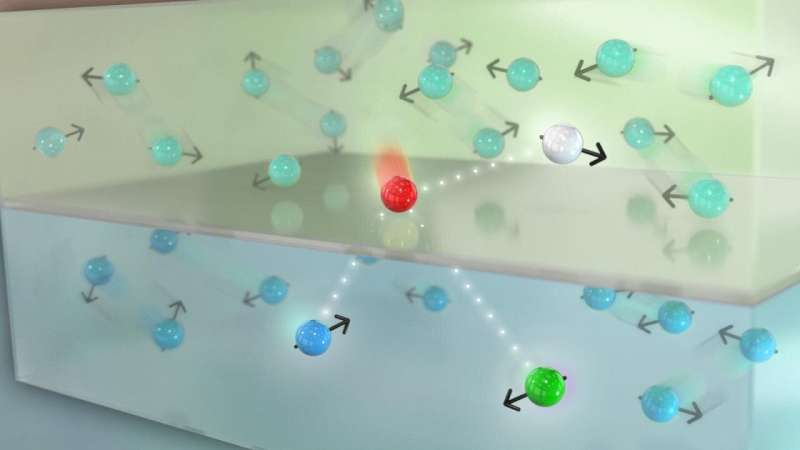Scientists find new way to identify, manipulate topological metals for spintronics

Topological materials have become a hot topic in quantum materials research, as they have potential applications for quantum information and spintronics. This is because topological materials have strange electronic states in which an electron's momentum is connected to its spin orientation, something that can be exploited in new ways to encode and transmit information. One type of topological material, called a magnetic Weyl semimetal, is attracting interest because of its potential ability to be manipulated with magnetic fields.
Because these materials are so new, however, it has been difficult for scientists to identify and characterize Weyl semimetals. A recent theory and modeling study from scientists at the U.S. Department of Energy's (DOE) Argonne National Laboratory may not only give researchers an easier way of finding Weyl semimetals, but also a way to more easily manipulate them for potential spintronic devices.
Previous attempts to investigate Weyl semimetals relied on a complicated technique requiring an X-ray or a laser source and carefully prepared samples. To simplify the observation of semimetals, Argonne researchers instead proposed to use the relationship between two essential properties—electronic spin and charge—to reveal the nature of the topological materials and give scientists new ways to use them.
"We want to know if there is some signature in the semimetal that we can see if we attempt to run a current through it, something that is characteristic of it being a Weyl semimetal," said Argonne materials scientist Olle Heinonen.
To generate a charge current in the Weyl semimetal, Heinonen proposed first to inject a spin current at the interface between a normal metal and the Weyl semimetal. While the spin current involved an influx of electrons with spins pointed in a particular direction, there were no net charges injected because electrons of opposite spin were being pulled the other way.
"You can think of it like having two swimmers going opposite ways in a swimming pool, one doing the freestyle and one doing the backstroke," he said. "There's no net direction of swimming, but there is a net amount of freestyle."
By moving spins preferentially from the normal metal into the Weyl semimetal, the researchers found that the semimetal needed to find ways to accommodate electrons with particular spins in its electronic structure. "You can't just stick any electron wherever you want," Heinonen said.
Instead, the researchers found that the electrons tend to redistribute their spins into those places that are available and energetically favorable. "You might not be able to fit all your spin into one particular electronic state, but you can fit fractional amounts of spin in different states that add up to the same amount," Heinonen said. "Imagine if you have a wave that hits a rock; you still have the same amount of water moving, just in different directions."
When the electron "breaks up" in this manner when it encounters the Weyl semimetal, the different resulting electronic states travel with different speeds, generating a charge current. Depending on the direction in which this current is measured—say, from top to bottom or from left to right—scientists saw different results.
"How the electron breaks up is related in a very sensitive way to the relationships between energy, momentum and spin in the magnetic Weyl semimetal," Heinonen said. "As a result, how the direction of the charge current changes is directly related to the properties of the Weyl semimetal, allowing you to determine its topological characteristics."
Seeing the anisotropy, or the difference in charge current when measured in different directions in the Weyl semimetal, gives researchers two pieces of information. First, it reveals the Weyl nature of the material, but perhaps more importantly it allows researchers to tune the properties of the material. "The response we see is uniquely interesting because it's a Wey lsemimetal, and because it has this interesting anisotropic response, we can probably exploit that in some devices," Heinonen said. "We're out a little bit ahead of the curve as far as people actually making many Weyl semimetals, but this gives us a cheap way of testing and experimenting with a type of material that is likely to become more popular."
A paper based on the study, "Spin-to-charge conversion in magnetic Weyl semimetals," appeared in the Nov. 1 issue of Physical Review Letters. Argonne's Ivar Martin, Shulei Zhang, now an Assistant Professor of Physics at Case Western Reserve University, and Anton Burkov of the University of Waterloo, also collaborated on the study.
More information: Steven S.-L. Zhang et al, Spin-to-Charge Conversion in Magnetic Weyl Semimetals, Physical Review Letters (2019). DOI: 10.1103/PhysRevLett.123.187201
Journal information: Physical Review Letters
Provided by Argonne National Laboratory




















